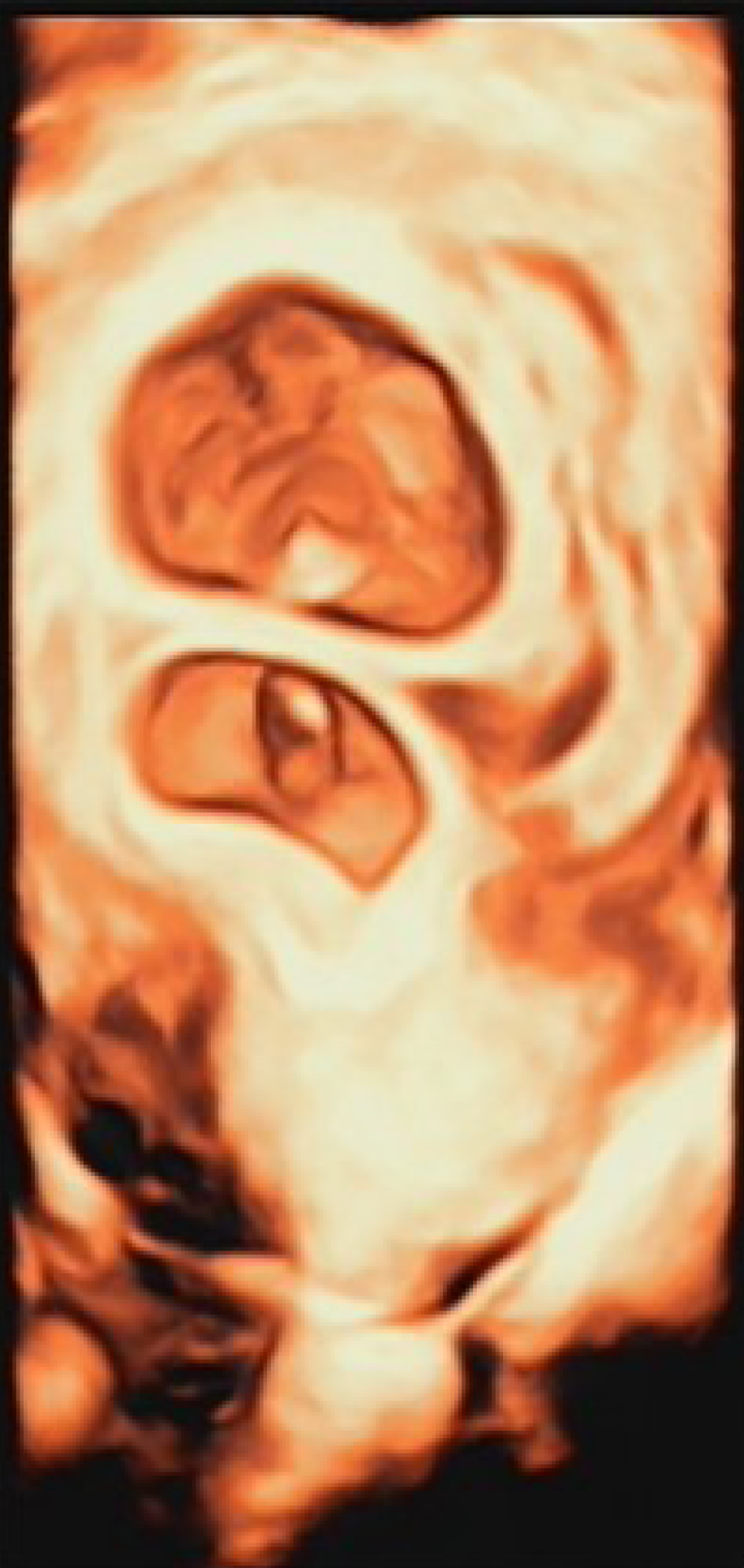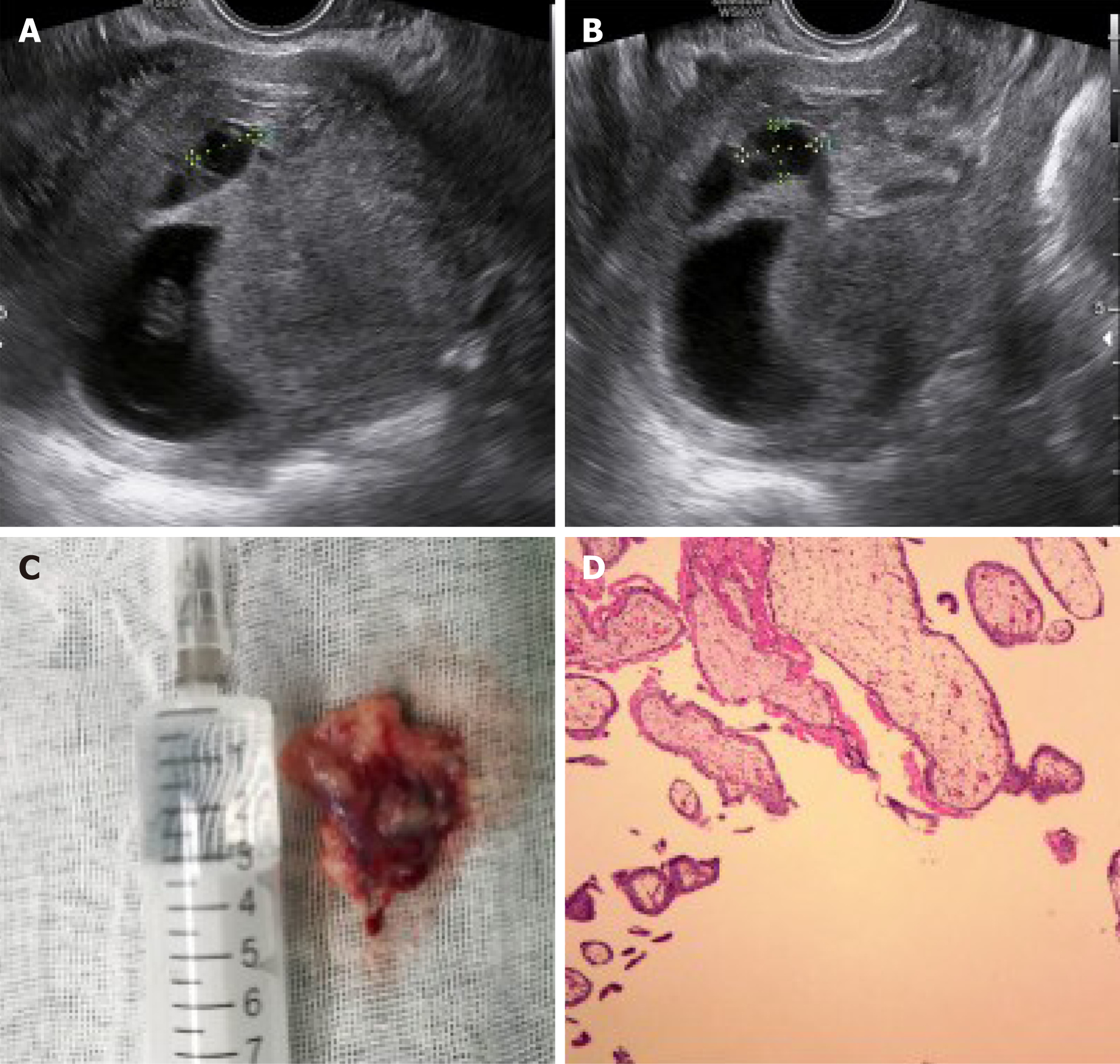Copyright
©The Author(s) 2021.
World J Clin Cases. Aug 6, 2021; 9(22): 6428-6434
Published online Aug 6, 2021. doi: 10.12998/wjcc.v9.i22.6428
Published online Aug 6, 2021. doi: 10.12998/wjcc.v9.i22.6428
Figure 1 Ultrasound images of a heterotopic cesarean scar pregnancy.
Transvaginal ultrasound showing two gestational sacs (GSs), one (GS1) in the uterine fundus and the other (GS2) in the lower uterine segment at 8+ wk gestation.
Figure 2 Ultrasound images of a heterotopic cesarean scar pregnancy after intervention.
A and B: Transvaginal ultrasound showing normal growth of the intrauterine pregnancy (gestational sac 1) in the uterine fundus and the decreased size of the ectopic pregnancy sac (gestational sac 2) in the lower uterine segment 2 d after selective embryo aspiration; C: Gestational tissue removed from the lower segment of the uterus by suction and curettage, the size marked with a 10 mL syringe; D: Histological examination of the removed specimen confirming the presence of trophoblastic tissue (hematoxylin and eosin stain, × 50).
Figure 3 Sequential views of an intrauterine pregnancy and the blood supply at the site of implantation of an ectopic pregnancy on ultrasound after intervention.
A: Transvaginal color Doppler ultrasound showing the normal growth of the intrauterine pregnancy (*) and a hematoma-rich blood supply at the site of implantation of the ectopic pregnancy at 10 wk gestation; B: Transabdominal color Doppler ultrasound showing the normally growing embryo (*) and no blood supply at the site of implantation of the ectopic pregnancy at 13 wk gestation.
- Citation: Chen ZY, Zhou Y, Qian Y, Luo JM, Huang XF, Zhang XM. Management of heterotopic cesarean scar pregnancy with preservation of intrauterine pregnancy: A case report. World J Clin Cases 2021; 9(22): 6428-6434
- URL: https://www.wjgnet.com/2307-8960/full/v9/i22/6428.htm
- DOI: https://dx.doi.org/10.12998/wjcc.v9.i22.6428











